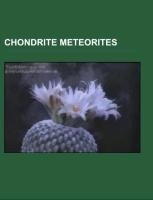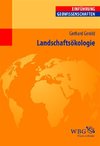
-
 Anglický jazyk
Anglický jazyk
Chondrite meteorites
Autor: Source: Wikipedia
Source: Wikipedia. Pages: 30. Chapters: Aarhus (meteorite), Abee (meteorite), Adelie Land meteorite, Adhi Kot (meteorite), Adzhi-Bogdo (stone), Agen (meteorite), Akbarpur (meteorite), Albareto (meteorite), Allegan (meteorite), Allende meteorite, Ambapur... Viac o knihe
Na objednávku, dodanie 2-4 týždne
14.61 €
bežná cena: 16.60 €
O knihe
Source: Wikipedia. Pages: 30. Chapters: Aarhus (meteorite), Abee (meteorite), Adelie Land meteorite, Adhi Kot (meteorite), Adzhi-Bogdo (stone), Agen (meteorite), Akbarpur (meteorite), Albareto (meteorite), Allegan (meteorite), Allende meteorite, Ambapur Nagla, Andura, Angers (meteorite), Ankober (meteorite), Anlong (meteorite), Arbol Solo (meteorite), Archie (meteorite), Arroyo Aguiar (meteorite), Avanhandava (meteorite), Beardsley meteorite, Bovedy (meteorite), Buzzard Coulee meteorite, Chergach, Chondrule, CI1 fossils, Claxton Meteorite, Ensisheim (meteorite), Gao-Guenie meteorite, High Possil meteorite, Homestead (meteorite), Kaidun meteorite, Karoonda meteorite, Kesen meteorite, L'Aigle (meteorite), Mbozi meteorite, Middlesbrough meteorite, Monte Milone (meteorite), Moss meteorite, Murchison meteorite, Neuschwanstein (meteorite), Orgueil (meteorite), Ourique (meteorite), Paragould meteorite, Park Forest (meteorite), Peace River (meteorite), Pultusk (meteorite), Qidong (meteorite), St-Robert meteorite, Sutter's Mill meteorite, Sylacauga (meteorite), Tagish Lake (meteorite), Tenham (meteorite), Wold Cottage (meteorite), Yamato 691. Excerpt: Neuschwanstein was an enstatite chondrite (type EL6) meteorite that fell to Earth on 6 April 2002 at 22:20:18 GMT near Neuschwanstein Castle, Bavaria, at the Germany-Austria border. The original meteorite burst into several fragments at a height of about 22 kilometers above the ground. The fragments descended on an area of several square kilometers. Three fragments were recovered with a total mass of about six kilograms. Neuschwanstein was the first meteorite in Germany, and the fourth in the world, that was monitored by one of the world's fireball networks, namely by the European Fireball Network. Photographing the meteor simultaneously from several locations allowed accurate reconstruction of its trajectory. The 90.6 km long trace of the Neuschwanstein meteor within the Earth's atmosphere began at a height of about 85 kilometers, about 10 km east-northeast of Innsbruck, with an entry angle of about 49° to the horizontal, and ended 16.04 km above the Earth's surface. Shortly before that it split into fragments at the "endpoint" at a height of about 22 kilometers. The entry velocity of 20.95 km/s in the atmosphere was rapidly reduced by air resistance to about 2.4 km/s at the end of the visible trajectory. Then the meteorite went into free fall which lasted about 108 seconds. The impact velocity on the surface was about 250-280 km/h. The fragments were displaced in the lower atmosphere (troposphere) from their expected trajectories by strong wind. The European Fireball Network monitored the meteor from several stations, including those in Augsburg (Germany), Primda (Czech Republic) and Weyregg am Attersee (Austria). Simultaneous observation allowed accurate reconstruction of the flight path using triangulation. Neuschwanstein was the first meteorite in Germany and the fourth meteorite in the world that was monitored by one of the several world's fireball networks, after Príbram meteorite of Czechoslovakia in 1959; Oklahoma in 1970 and Canada in 1977. The fall caused
- Vydavateľstvo: Books LLC, Reference Series
- Rok vydania: 2013
- Formát: Paperback
- Rozmer: 246 x 189 mm
- Jazyk: Anglický jazyk
- ISBN: 9781155696553




 Nemecký jazyk
Nemecký jazyk 







